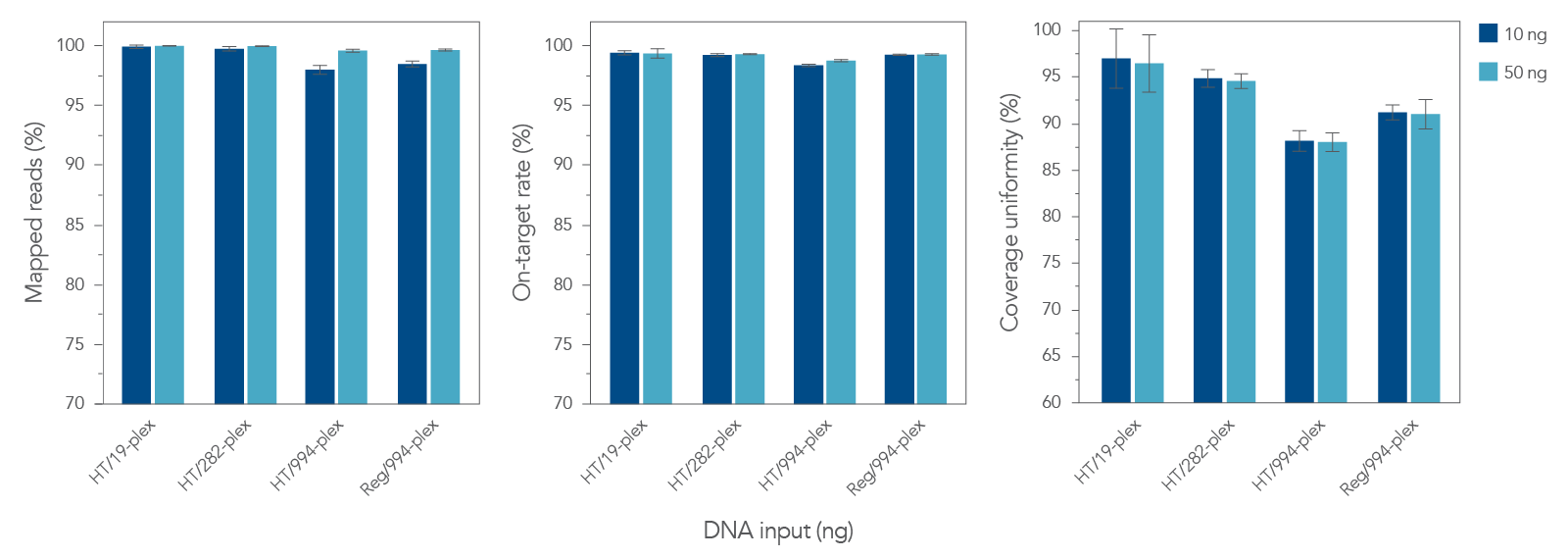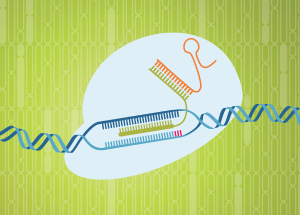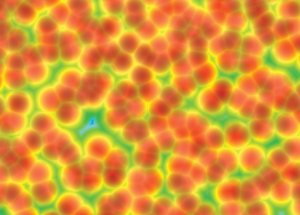rhAmpSeq amplicon sequencing system—NGS power. PCR simplicity.
Faster discovery with a rapid and accurate targeted sequencing solution
The rhAmpSeq system enables highly accurate amplicon sequencing on IlluminaЂч next generation sequencing (NGS) platforms. Whether you are investigating thousands of targets or a few, the fast and easy rhAmpSeq workflow, based on our proprietary
RNase H2-dependent PCR (rhAmp PCR) technology, generates NGS-ready amplicon libraries for deep, targeted resequencing.
- Achieve cost-effective library preparation using custom or predesigned panels
- Reduce the formation of primer dimers or misprimed PCR products
- Perform only 2 PCR amplification steps in a fast, easy workflow
- Ensure robust results with IDT manufacturing quality
Harnessing the power of rhAmp PCR
Our proprietary rhAmp PCR technology drives the rhAmpSeq system. Using RNA-base–containing blocked primers (rhAmp primers), this technology harnesses the intrinsic properties of the RNase H2 enzyme to recognize and cleave DNA:RNA duplexes.
rhAmp PCR is thus a powerful tool for increasing amplification specificity and minimizing the biggest limitation of PCR multiplexing—primer dimers.
The rhAmpSeq system combines the performance advantages of rhAmp PCR with a fast, easy-to-use workflow that requires only 2 PCR amplification steps (Figure 1) to generate amplicon libraries for Illumina sequencing platforms. Figure 1 shows both amplification
steps in the rhAmpSeq workflow, highlighting the role of rhAmp PCR technology during the first amplification step (Targeted rhAmp PCR 1). Coupled with our best-in-class DNA and RNA manufacturing, the rhAmpSeq system offers high quality,
targeted, sequencing results quickly and cost-effectively.
To learn more about rhAmp PCR technology, visit this page.
A simple workflow with few components
The rhAmpSeq system offers a simple, easy workflow with only 2 PCR amplification steps, using either a custom or predesigned panel. To begin creating your amplicon libraries, simply choose a panel, then add the rhAmpSeq Library Kit and rhAmpSeq Index Primers.
Amplicon library preparation that matches your throughput needs
The rhAmpSeq system can be used with either a regular or a high-throughput protocol. Both protocols are automation friendly. The regular protocol offers slightly higher NGS performance, while the high-throughput protocol reduces both overall workflow time and cost by removing cleanup steps and the need to quantify and normalize DNA libraries before pooling (Table 1). rhAmpSeq libraries are compatible with Illumina NGS platforms.
Table 1. Choose the best rhAmpSeq library preparation protocol for your needs.
| Considerations |
Regular protocol |
High-throughput protocol |
| Better sample-to-sample coverage uniformity |
✔ |
|
| Better performance with challenging sample types (e.g., FFPE, cfDNA) |
✔ |
|
| Ideal for high-throughput screening labs |
|
✔ |
| No library quantification and normalization required |
|
✔ |
| Hands-on time* |
2.5–4.5 hr |
1–1.5 hr |
| Total workflow time* |
4–6 hr |
4–4.5 hr | * Estimated time to process 12–96 samples using manual pipetting, including reaction setup, cleanup, library quantification, and normalization steps
The rhAmpSeq system offers consistent performance across panel sizes ranging from tens to thousands of amplicons in a single multiplex reaction (Figure 3), and supports a variety of applications, including challenging sample types [e.g., formalin-fixed paraffin-embedded (FFPE) and cell-free DNA (cfDNA) samples]. Table 2 summarizes key features, specifications, and performance metrics for the rhAmpSeq system.
The data shown in Figure 3 are representative of performance from 3 different custom rhAmpSeq panels using random SNP markers in the human genome with initial (non-optimized) rhAmpSeq panel designs. The performance of your custom panel may depend on several factors, including the quality of the input samples and the reference genome in the case of non-human species.
Table 2. rhAmpSeq system features and specifications.
| Feature |
Specification |
| Supported protocols |
Regular library preparation (10–100 ng)
High-throughput library preparation (10–50 ng) |
| Sample type |
Tissue, FFPE, cfDNA |
| Insert size |
Flexible (50–200 nt) |
| Custom panel size |
Up to 5000 amplicons per panel |
| Sample indexing capability |
96 index sequences (up to 9216 combinations) |
| Compatible platforms |
Illumina |
Faster discovery, fewer headaches
The rhAmpSeq system can be used in a wide variety of research applications, and should be considered for any application that requires stringent and efficient sequencing analysis. These are just a few of the fields in which rhAmpSeq technology has been successfully used.
Agricultural biotechnology
Genotyping by sequencing is an agricultural biotechnology technique for molecular breeding and trait/marker selection. Whether you are focused on a few markers for marker-assisted selection or on thousands of markers for genomic selection, the rhAmpSeq system can help accelerate your plant or animal improvement programs.
CRISPR genome editing
CRISPR genome editing has recently become a dominant technology. However, CRISPR editing can produce unwanted off-target editing events. Custom rhAmpSeq Panels save time and resources by allowing you to quickly interrogate many CRISPR-edited sites simultaneously. No more single PCRs!
Disease research and sample identification
Detecting disease-associated variants is a key element of human-focused research. With the rhAmpSeq systemЁЏs combined specificity and multiplexing capabilities, you can easily and accurately detect ЁАhotspotЁБ variants. In addition, the rhAmpSeq Sample ID Panel can be used to track samples and avoid mix-ups in human sample workflows.
Design custom panels tailored to your research
|
- ЛчПы ШФБт
- ЛчПыШФБтАЁ ОјНРДЯДй.
ЛчПыШФБт РлМК
|
 IDT
IDT





